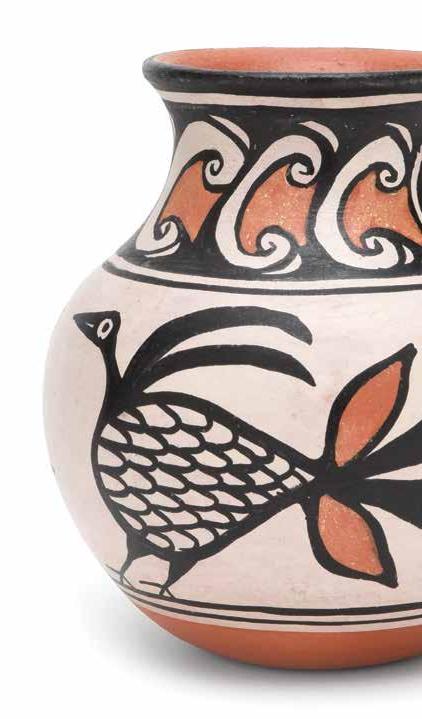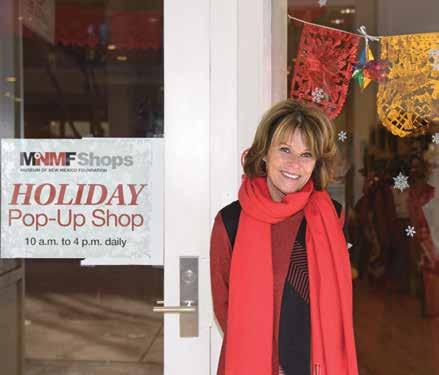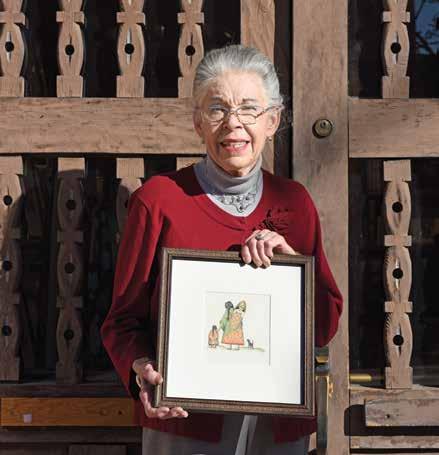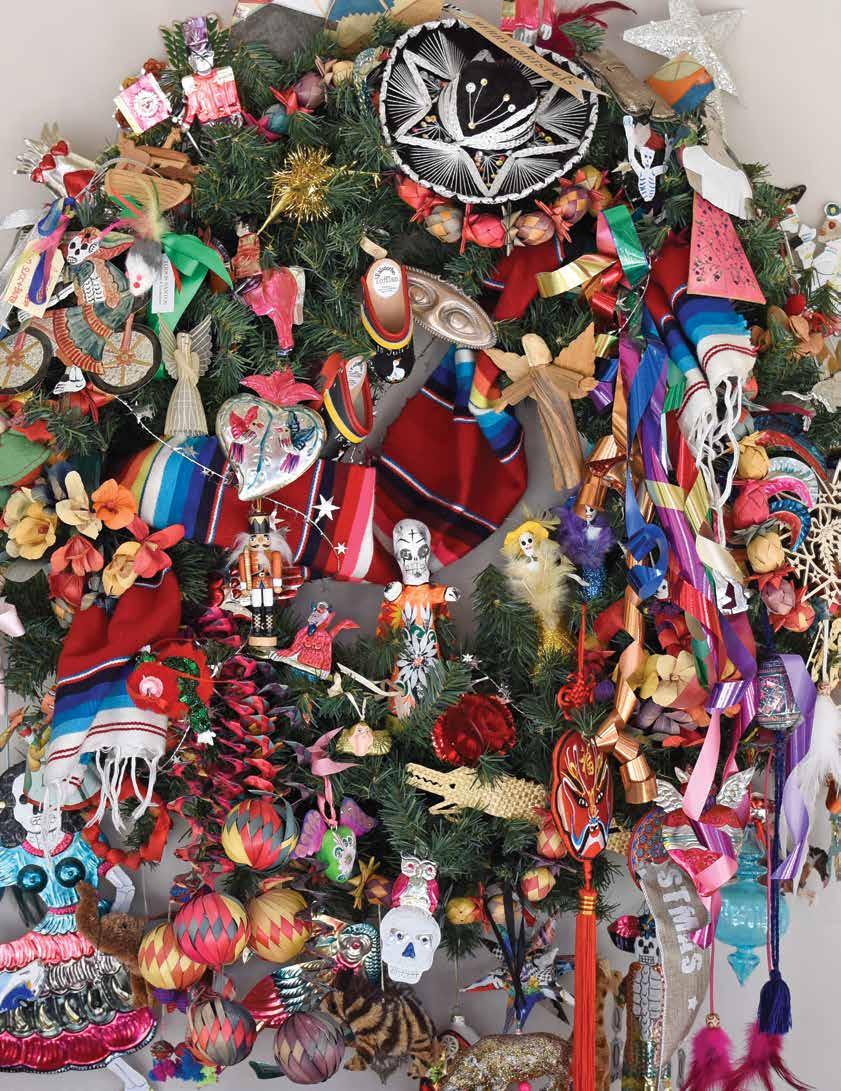
4 minute read
MUSEUM OF INDIAN ARTS AND CULTURE
Shop Talk with Felipita Ortiz
Colleen Cloney Duncan Shop Manager
I’ve worked at the Foundation for 30 years. I’ve been at the Museum of Indian Arts and Culture since 2003.
I have a passion for pottery. It was something I grew up with in my family from Nambe Pueblo. My grandfather’s sister was a potter, Josefita Peña. And potter Lonnie Vigil is my cousin.
Being from a family that is represented in museums is like being connected to the whole world. Visitors can see pieces from my great-grandmother, my cousin, and it’s something that will live on. I can be part of that connection as well.
Sometimes visitors don’t get the connection between the exhibit until they come into the shop. They are more interested when I tell them pottery is not just something we make and sell, there’s family behind it. There are stories behind it. I’ll tell a story about my grandmother sending us kids to pick up the cow patties to throw in the fire, and they find that interesting. When they learn about what is involved in making a piece, that’s my opportunity.
There are several people I’ve made connections with over the years. These friendships hold a soft place in my heart. Not only do those customers love the crafts, they love the people who make the crafts, and they love Santa Fe. That’s the whole cycle.
Sterling Shopping
A Trove of Native-Made Products
At the Colleen Cloney Duncan Shop in the Museum of Indian Arts and Culture, visitors quickly realize that the buying opportunities are unique. A selection of jewelry, crafts and apparel made by more than 100 artists from area Pueblos, as well as from Navajo and Hopi makers, have cast a sterling reputation for the shop as a hub for Native works not always found elsewhere. These objects are cultural envoys to shoppers who take them home.
Among the shop’s treasures are storyteller dolls made by Jemez Pueblo artist Judy Toya Waquie, a straw and turquoise cross from Carlton Gallegos (Santa Ana Pueblo) and sterling silver cuffs by Cippy Crazy Horse (Cochiti Pueblo). Shops buyer Sara Birmingham works closely with the shop’s longtime manager Felipita Ortiz to stock the largest possible selection of works by Native artists that dovetail with artifacts shown in museum galleries.
For Birmingham, it’s all about handpicking art, in the widest possible price range, that helps create a lifelong connection between museum visitors and the shop.
“I can find a storyteller from Jemez Pueblo that children made for $10 at a craft fair, or from an adult artisan selling it for $100,” says Birmingham. “People can take those things home with them from the shop. They’re not going to find that anywhere else.”
Of all the Museum of New Mexico Foundation shops, the Colleen Cloney Duncan Shop carries the largest line of products exclusive to the museum. These include Navajo chief’s blanket-adorned T-shirts and bags; coasters and cards featuring designs from Navajo rugs and woven Native baskets;
and a scarf, umbrella, journal and hooded wrap bearing pottery-inspired designs from renowned Santo Domingo potter Robert Tenorio.
The museum’s deputy director Matthew Martinez calls Tenorio a great example of an artist who, through his products and his artistic practice, serves as an ambassador of the museum’s mission to promote awareness of Indigenous art in the Southwest.
“He’s really good about teaching and mentoring and talking about his artwork and what it means from a cultural perspective,” says Martinez. “We rely on artists like Tenorio to inform people about the museum and what it means to have a collaborative relationship with an artist who supports our practice of good stewardship. He’s a good fit for that bridge.”
The jewelry sold at the shop also educates visitors about the deeper meanings behind precious stones and works in silver. Martinez recalls the 2014 exhibition Turquoise, Water, Sky: The Stone and Its Meaning. The show explored the stone from its geological, mining and cultural history to questions of authenticity and value.
“Obviously, turquoise signifies water, but it’s made within the cracks of dry rocks. So that exhibit walked people through the explanations of the meanings of turquoise,” he says. “It’s a special symbol and you can see it in the silver bracelets and bolo ties that are available in the shop.”
The connection that visitors made between everything they learned about the stone in the exhibition and the item they chose to buy from the store is lifelong, Martinez says. The knowledge they took from the museum carries forth in future conversations they have about that piece of jewelry.
Martinez smiles as he mentions the bolo tie selection again. He notes that the Colleen Cloney Duncan Shop carries the largest selection of gender-neutral jewelry on Museum Hill. That in itself gives people a reason to keep coming back, he says.
To support the Museum of Indian Arts and Culture, contact Lauren Paige at Lauren@museumfoundation.org or 505.982.2282.

Opposite: Sterling silver pins are fine examples of Zuni, Hopi and Navajo craftmanship. Right: A Robert Tenorio pot. Photos © Saro Calewarts.










